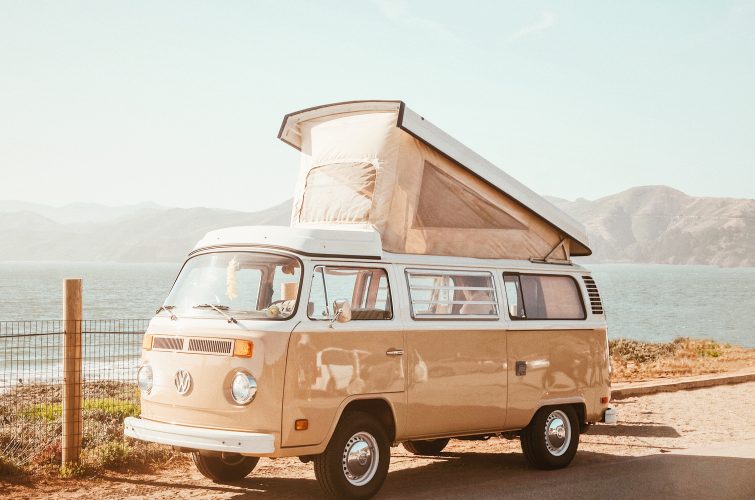
Escaping the everyday grind to live the vanlife – even if it’s only for a short holiday – is definitely appealing for many of us, with the freedom of not being tied down to the one place and lack of worry about accommodation being a huge bonus.
But the #VanLife is often not as glamorous as Instagram may have us believe, and for many it can be quite a challenging way to holiday. After speaking to some avid travellers, I learned more about what you need to know before embarking on this highly-popular lifestyle.
While vanlifers are known for living an inexpensive lifestyle, the setup costs to purchase a suitable van can be very expensive, but it really depends on your tastes.
According to Alesha Bradford and Jarryd Salem, the founders of Van Life Theory, the price depends on the size, style and age of the van, as well as if you’re looking for an empty shell to build yourself or a fully-converted campervan.
“Generally, for a smaller van such as a Toyota Hiace that’s already kitted out, expect to pay between $15,000-$25,000,” Alesha explained. “For a larger Mercedes Sprinter or similar size, expect between $30,000 right up to $80,000.”
Alesha and Jarred chose a long-wheel base, high roof Mercedes Sprinter, as it was large enough to stand up in and long enough to have a full setup, including bathroom, kitchenette and large bed/work area.
“For us it was important to have enough space to live comfortably out of full-time, lots of room to work, and already built as we didn’t have time to do it ourselves. The Mercedes Sprinter is pricier than similar vans, but very reliable,” said Alesha.
Excluding the initial outlay for the van, in future years you can save a lot of money, with the main expenses of living the vanlife being food and fuel – although the latter can be quite high if you’re clocking some serious kilometres.
View this post on Instagram
Unfortunately, vanlifers can’t just park their vans wherever they choose without risking some serious fines, and it definitely pays to do your research before you leave to find free campsite locations at your holiday destination.
“Instagram makes the lifestyle seem like it’s all waking up on the beach, work for an hour or two then adventure around, parking wherever you want for the evening,” Ashlea explained.
“Reality is you spend a lot of time trying to find places to legally stay, planning routes, scheduling a trip around access to water, doing maintenance, and other general things such as driving long hours. But it’s a small sacrifice to make for the freedom.”
NSW National Parks and Wildlife Service offers a state-run app which is great for finding camping areas in national parks, which are generally always cheap or free to stay at.Wikicamps is another app that’s good for finding Australian campsites; it has the added bonus that you can download the maps for offline use.
This isn’t necessarily a bad thing, but when you fit everything you need into the tiny confines of your van, you’ll find that you’ll live “out” of your van more than you live “in” it.
One thing to bear in mind is that when you’re living in a campervan, nature will have a huge say in what you do, and you can potentially be stuck in a tiny space with your travel buddies for days.
Sure, you can go somewhere indoors – like a cafe or a supermarket – but if you’re travelling with kids and they’re having a meltdown or desperately need some alone time, things can get stressful quite quickly.
Evie Farrell, solo mum and author of Backyard to Backpack, decided to ditch the corporate world in 2016 so that she could do her two favourite things: travel and spend more time with her daughter, Emmie.
In Evie’s case, instead of spending money on a fancy campervan (which would have confined her to travel within Australia), she used the $20,000 she had previously saved for a kitchen renovation to travel overseas with her daughter.
“I rented out the house and bought a one-way ticket to Asia and we went from there,” she said. “It’s so much cheaper to live over there, a fraction of what it costs here.”
The pair loved their travel so much that they continued on to other places – including a trip to the Central West in 2020 – with Emmie keeping up with her school work by distance education.
No matter how you choose to travel, taking the time to do some thorough research beforehand will help ensure the lifelong memories outweigh the difficulties.